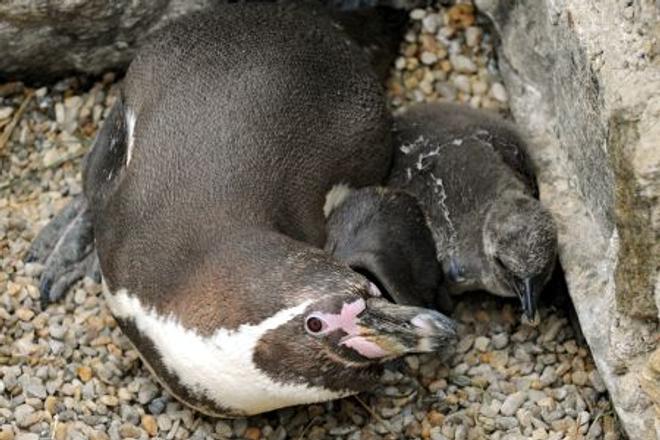The flock of Humboldt Penguins (Spheniscus humboldti, also termed the Peruvian Penguin, or Patranca) at the zoo in Košice, which has been plagued by a series of mishaps and deaths, has finally recorded some good news: one of the females, Žofka, laid eggs at the end of June and on August 2 one baby penguin was born, followed by another on August 4. Both young penguins are male – which works out well given that the flock lacked males after a series of deaths and infections.
“We made a unique experience,” Zoo’s head Erich Kočner told the TASR newswire. “We received a male called Pepa as a donation from the zoo in Prague, Czech Republic, and we matched him with our Košice female, Cilka. However, it seems that penguins can behave like humans – Pepa was obviously unfaithful, as Cilka did not get inseminated, but Žofka laid eggs and bore two youths,” Kočner said. “The thing got even more complicated – as in the wild, usually both parents take care of their young, but Pepa showed no interest in his sons. Penguin parents pre-digest the food for the newly-born babies, then regurgitate it to feed them.”
“We feared we might be forced to take the penguins away from their mother and feed them artificially, but Žofka managed well,” penguin tender Erika Karafová said. “The first small penguin was born on August 2 and weighed 48 grams, while the second one hatched on August 4 and weighed 73 grams. But in the following days, the weaker penguin grew quicker, and by August 21, they are on the same level,” she added.
Karafová stressed for the SITA newswire that although both youngsters seem fine so far, the critical time comes after 10-12 weeks when they should moult. In autumn, their mother Žofka is supposed to moult, too, but this could become complicated as she lost a lot of her strength when she gave birth.
“It will be a huge success if they manage to breed the young males to their juvenile age,” Kočner summed up. “But even as things are now, we can say we have handled the penguin breeding well. We recorded – in our modest conditions – a success that is praised by experts and by other zoos, even renowned ones. The thanks goes to the tenders of penguins, especially to Mrs. Karafová,” he concluded.



 Penguin babies at Košice zoo (source: TASR)
Penguin babies at Košice zoo (source: TASR)